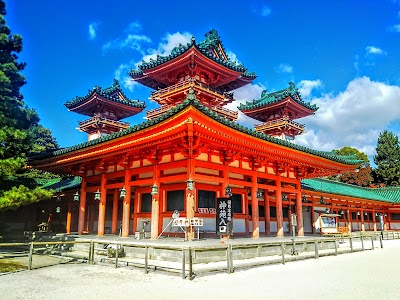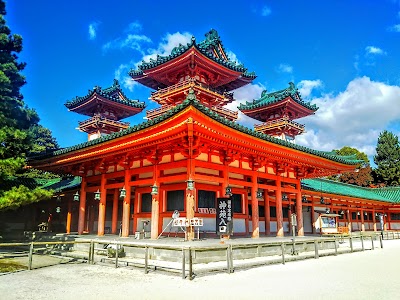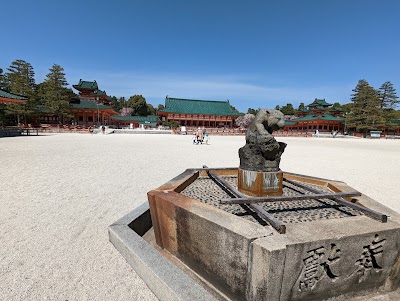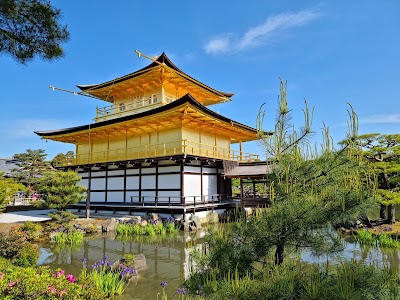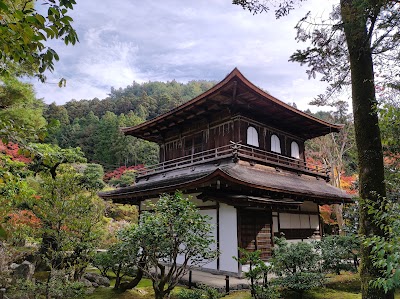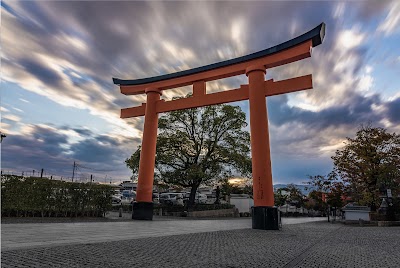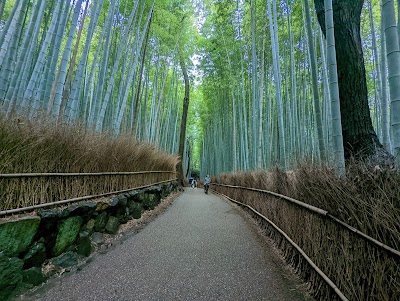Heian Shrine (平安神宮)
Overview
Introduction to Heian Shrine
Nestled in the heart of Kyoto, the Heian Shrine (平安神宮) stands as a magnificent tribute to the city's imperial past. Established in 1895 to commemorate the 1,100th anniversary of the founding of Kyoto, this Shinto shrine is dedicated to Emperor Kammu, the founder of the Heian period, and his son, Emperor Komei. The shrine is not only a place of worship but also a cultural landmark that reflects the grandeur of the Heian era, making it a must-visit destination for travelers seeking to understand Japan's rich history and traditions.
Architectural Marvels
Upon approaching the Heian Shrine, visitors are greeted by the stunning vermilion gates, known as the “torii.” These gates symbolize the transition from the mundane to the sacred. The shrine's main hall, or “Honden,” is a remarkable example of Heian-period architecture, designed to replicate the style of the Imperial Palace during that era. The intricate wooden structures and vibrant colors create an inviting atmosphere, while the layout of the shrine encourages exploration and reflection. A stroll through the grounds reveals beautifully manicured gardens, ponds, and seasonal flora, which change dramatically throughout the year, offering a different experience with each visit.
Serene Gardens
One of the shrine's highlights is its expansive gardens, which are divided into two main areas: the “Shinen” (garden) and the “Kyu-kyoto” (old capital). The gardens are designed in the traditional Japanese style, featuring winding paths, tranquil ponds filled with koi fish, and meticulously arranged stone lanterns. During spring, the cherry blossoms create a breathtaking spectacle, while autumn showcases vibrant hues of red and gold, making it a popular spot for both locals and tourists. The gardens provide a peaceful retreat from the bustling city, inviting visitors to pause, reflect, and immerse themselves in nature.
Festivals and Events
Heian Shrine is also known for its vibrant festivals, which offer a glimpse into the cultural practices of Japan. One of the most notable events is the “Kyoto Gion Matsuri,” held in July, where elaborate floats parade through the streets, celebrating the region's rich history. Additionally, the shrine hosts various seasonal events that allow visitors to experience traditional Japanese rituals, such as tea ceremonies, music performances, and poetry readings. These events not only highlight the importance of the shrine in Kyoto's cultural landscape but also provide visitors with an opportunity to engage with local customs.
Visiting Tips
For travelers planning a visit to Heian Shrine, it’s best to allocate a few hours to fully appreciate the beauty of the shrine and its gardens. The shrine is conveniently located near public transportation, making it easily accessible from other popular attractions in Kyoto. There is no admission fee to enter the shrine grounds, although some events may have associated costs. Be sure to check the shrine's calendar for any special ceremonies or festivals during your visit. Photography is encouraged, so don’t forget to bring your camera to capture the stunning scenery and architecture.
In conclusion, the Heian Shrine is not just a historical site; it is a living testament to Japan's cultural heritage. Its blend of architecture, nature, and tradition provides a unique experience that resonates with visitors from around the world. Whether you’re drawn by the serene gardens, the rich history, or the vibrant festivals, a visit to Heian Shrine is sure to leave you with lasting memories of Kyoto's enchanting past.


